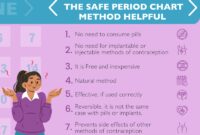Best Way To Kill Moss In Lawn – This article contains affiliate links, we will receive a commission for every sale we generate from it. Find out more
Spring is fast approaching and many gardeners are looking to get their gardens looking their best for the warmer months. In some cases, moss can make its home on garden lawns or asphalt. So read on for some simple tips to help keep your garden and grounds moss-free.
Best Way To Kill Moss In Lawn

At some point, many gardeners may struggle with moss growing on their lawn, so why does this happen?
Moss Lawn: Everything You Need To Know About Growing This Sustainable Alternative To Grass
How to get rid of moss: At some point many gardeners will struggle with moss growing on their garden lawn (Image: GETTY)
If moss is becoming a problem in your garden, it’s worth doing some research to find out what’s contributing to the poor growing conditions.
How to get rid of moss: Grass piles and shady lawns are potential places for moss to grow (Image: GETTY)
One method involves the use of a fumigant containing ferrous sulfate, which can be applied in fall or spring.
How To Get Rid Of Moss: The Lawn Moss Killer Guide Of 2023
A few weeks after applying the treatment, when the moss turns black, it can be removed and properly disposed of.
“On small lawns this can be done by hand by digging up the moss with a spring rake, but on larger lawns mechanical scrapers can be used.
“Non-chemical bacteria-based products such as Viano MO Bacteria Organic Lawn Fertilizer, Neudorff Organic Cleanlawn and Miracle-Gro Evergreen No Rake claim good moss control as well as lawn nourishment.

“These products require soaking prior to activation and can be applied from March to October when temperatures are above 150C (590F).
How To Rid Your Lawn Of Moss
“An added benefit is that the dead moss should decompose in place, negating the need for scraping.”
While there are many ways to get rid of moss from your garden lawn, the root cause of the problem must be addressed to ensure a moss-free lawn in the future.
If moss is growing on asphalt, such as a driveway, there are many products on the market that target this problem.
In most cases, you will need to brush the area to remove as much moss and dirt as possible before applying the treatment.
How To Remove Lawn Moss
“I’m a lawn expert and some mowers shouldn’t be used to cut long grass – here’s why”
View today’s front and back pages, download newspapers, back issues and access historical daily newspaper archives. Moss is like the common cold and spreads everywhere during cold, wet winters. However, moss does not easily move into a thick, healthy lawn. Instead of the grass being thin, strong and healthy, moss grows where it is broken. This means that good lawn care is essential, so if you feel you need to improve your lawn maintenance, read our section on lawn care tips and in particular on preventing grass moss.
The key point to remember is that moss grows in cool conditions that are usually too cold for good grass growth. Start the fight against moss early and your lawn will not grow in the places left by dead moss! It’s not a matter of time to kill the moss early or twice, but only when the grass starts to grow well should the moss be removed and replanted. Watch our moss treatment videos.

If you’ve maintained your lawn well and the moss is barely visible, then give yourself a pat on the back. Your goal now is to prevent the moss from decaying so that it doesn’t fight for space on the grass.
How To Control Moss In Your Lawn
I always use Green-Up Ferrous Sulfate as a liquid spray during cold spring weather. Iron is also an important mineral and helps keep grass green and suppresses insect infestation without causing growth. You can do this every 4 to 8 weeks from winter to early spring.
If you feel your lawn needs a nutritional boost in late winter or very early spring, you can use Winter Green, which will kill moss and make the lawn really green without interfering with all-important spring nutrition.
As above, but if the moss is easily visible, you’ll probably want to remove it in April. Once you know that, you’re in a better position to decide whether you should plant it or not. If the lawn has no bare patches and is still dense, then excessive seeding is not necessary, although it can be very beneficial to plant and introduce new grass plants to the lawn to improve its overall health and appearance.
Another difference here is that you can skim first and then spray ferrous sulfate to kill any remaining algae. The choice is yours and depends on the experience. Watch Raking’s video
Get Rid Of Moss For Good
This is a thorough and necessary procedure for the most serious mosquito bites. Also, if your lawn is more than 5 years old, I would always follow this procedure, especially if it wasn’t scratched in the fall and wasn’t overworked.
A thick, dense healthy lawn is the primary defense against moss. This means regular mowing and spring fertilizing to thicken the lawn. Apply fertilizer on the day of the last step of the above process (or within 2 weeks), or if you are planting, when you see new grass clippings sprouting from your seed. Have you ever looked at your lawn and noticed thick patches of moss? Although moss isn’t technically a weed, if you don’t grow it on purpose, it can be. Moss is a simple and ancient plant with a shallow root system. It is an opportunistic plant that takes hold anywhere. In your lawn, this means that moss will grow where your grass isn’t thick enough to remove it. Fortunately, getting rid of moss in your lawn isn’t too difficult. However, moss is a sign that your lawn needs more care than simply removing the noxious plant.
Moss is a simple plant with shallow roots. In your lawn, it can act as a type of ground cover, taking the place of thinning your grass. Fortunately, its shallow roots make it relatively easy to remove. But removal is only the first step in complete moss control.

If you need to get rid of moss in your lawn, the first step is to kill the living plant. If you go to your local garden store, you can easily find chemical herbicides that target moss. Many are iron-based products and can actually feed your lawn while killing moss. Make sure you find a product specifically for moss. Weed herbicides may not work on moss and can also damage your grass.
Scotts Turf Builder 23 0 3 With Moss Control
The best time to use herbicides to control moss is when it is at the height of its growing season. Because moss likes cool, dry weather, its growth peak is usually spring and early fall. Of course, if you miss the ideal season, it’s not too late to apply the herbicide. You should be able to kill the moss with herbicides at any time of the year.
If you don’t want to put weeds in your yard or want something you can do at home, there are two moss control solutions that you can easily do at home. You can mix mild dish soap or baking soda with warm water to make an effective DIY herbicide that kills algae.
If using soap, mix 2-4 ounces with two quarts of water. For the baking soda method, mix 2 quarts of water with a small can of baking soda, like the ones they sell to deodorize the fridge. Two gallons should cover 1,000 square feet of moss-covered lawn. For a larger surface, increase the amount of solution, keeping the same ratio. Use a garden sprayer to apply a thick coating of the solution to the moss. Try balancing the moss for best results. Don’t worry too much about your grass, as none of these solutions should harm the surrounding grass.
After about 24 hours, the moss should die and turn orange or brown. Once the moss has died, it should be easily removed with a metal rake. Moss roots grow very shallow, so a rake should be able to remove the entire plant. After collecting the moss, dispose of it in sealed bags away from the lawn. The spores can still fly, be carried by the wind and spread more moss seeds on your lawn.
Greenkeeper’s Secrets: The Best Way To Kill Lawn Moss
Removing moss is easy, but it’s only the first step. To get rid of moss in your lawn and prevent it from growing again, you need to change the conditions in your lawn that caused it to grow in the first place. Although soil conditions do not necessarily cause or prevent moss growth, moss growth is an indicator of some soil problems.
Moss often grows in acidic soil, meaning soil with a low pH. You can bring a sample to your local Cooperative Extension to find out the pH level of your soil. In Georgia, laboratory testing is offered under the auspices of the county


